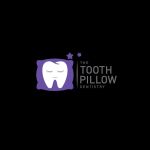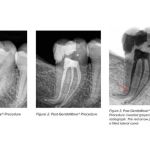Symptoms of Tooth Decay and How to Prevent It
- 1. What is Tooth Decay?
- 2. Symptoms of Tooth Decay
- 3. How to Prevent Tooth Decay
- 4. Treatments for Tooth Decay
- 5. Real-Life Experience of Tooth Decay
- 6. Maintaining Healthy Teeth with Dentistry Toothtruth
1. What is Tooth Decay?
Tooth decay, also known as dental caries or cavities, is one of the most common dental problems. It occurs when the enamel of the teeth is damaged by acids produced by bacteria in your mouth. These acids break down the sugars from the food you eat, leading to the formation of cavities. If untreated, tooth decay can lead to pain, infections, and even tooth loss.
Tooth decay begins when plaque (a sticky film of bacteria) builds up on your teeth. Over time, the bacteria in plaque convert sugars into acids that erode tooth enamel. The erosion eventually leads to the formation of holes in the teeth, which are known as cavities.
Understanding the symptoms and prevention methods of tooth decay is crucial in maintaining good oral hygiene and avoiding serious dental issues. In this article, we will explore the common symptoms of tooth decay and how to prevent it to ensure your teeth remain healthy for years to come.
2. Symptoms of Tooth Decay
Tooth decay often develops gradually and may not be noticeable in its early stages. However, once the decay progresses, several symptoms can indicate the presence of cavities or tooth damage. These symptoms include:
Tooth Sensitivity
If you experience pain or sensitivity when consuming hot, cold, or sweet foods and drinks, it could be a sign of tooth decay. This occurs because the decay weakens the tooth enamel, exposing the sensitive inner layers of the tooth.
Toothache
A persistent or sharp toothache is one of the most common symptoms of advanced tooth decay. The pain may be constant or triggered by certain foods or pressure on the tooth. If left untreated, the pain can become more severe and lead to complications like abscesses.
Visible Holes or Stains on Teeth
Cavities are often visible as dark spots, holes, or pits on the surface of your teeth. If you notice any discoloration, it’s important to see a dentist as it could indicate the presence of tooth decay.
Bad Breath or Unpleasant Taste
Bad breath (halitosis) and a persistent bad taste in your mouth may be signs of tooth decay. This is caused by bacteria that thrive on decaying food particles and produce foul-smelling gases.
Swollen or Bleeding Gums
Infected teeth can cause inflammation in the gums, leading to swelling, redness, and even bleeding when brushing or flossing. Gums that are swollen or tender can indicate that the tooth decay has reached the gums and may cause serious infection if left untreated.
3. How to Prevent Tooth Decay
Preventing tooth decay is easier than treating it. With proper oral hygiene and some lifestyle changes, you can significantly reduce the risk of developing cavities and keep your teeth healthy. Here are some tips for preventing tooth decay:
Brush Your Teeth Regularly
Brushing your teeth at least twice a day is the foundation of good oral hygiene. Use a fluoride toothpaste and a soft-bristled toothbrush to effectively remove plaque and prevent tooth decay. Make sure to brush for at least two minutes, paying special attention to the back teeth, where cavities are more likely to form.
Floss Daily
Flossing helps remove plaque and food particles from between your teeth, where your toothbrush can't reach. Flossing once a day is an essential habit for maintaining healthy gums and preventing cavities.
Use Mouthwash
Mouthwash helps kill bacteria that cause plaque buildup and promotes better oral hygiene. Choose an antimicrobial mouthwash or one with fluoride to help prevent tooth decay and freshen your breath.
Limit Sugary Foods and Drinks
Sugary foods and drinks fuel the bacteria in your mouth, which in turn produce acids that damage tooth enamel. Limiting your intake of sugary snacks, sodas, and juices can significantly reduce the risk of tooth decay.
Visit Your Dentist Regularly
Regular dental check-ups and cleanings are vital for catching tooth decay in its early stages. Your dentist will also apply fluoride treatments and sealants to further protect your teeth from decay. It’s recommended to see your dentist every six months for a professional cleaning and examination.
Drink Water with Fluoride
Fluoride is a natural mineral that helps protect your teeth from decay. Drinking water that contains fluoride or using fluoride treatments can strengthen your enamel and make it more resistant to decay.
4. Treatments for Tooth Decay
If you already have tooth decay, early intervention is essential to prevent further damage. Depending on the severity of the decay, your dentist may recommend one of the following treatments:
Fillings
For small cavities, your dentist may recommend filling the decayed portion of the tooth with a material such as composite resin, amalgam, or porcelain. Fillings restore the tooth's shape and function while preventing the decay from spreading further.
Root Canals
If tooth decay reaches the inner pulp of the tooth, a root canal may be necessary to remove the infected tissue. The tooth is then sealed and restored with a crown to prevent further damage and preserve the tooth's function.
Crowns
If the decay is too severe for a filling, your dentist may recommend a crown. A crown covers and protects the entire tooth, restoring its strength and appearance.
Extraction
If a tooth is beyond repair due to extensive decay or infection, your dentist may recommend extraction. Afterward, options like dental implants or bridges may be considered to replace the missing tooth.
5. Real-Life Experience of Tooth Decay
Many individuals face challenges related to tooth decay, and hearing real-life stories can help others understand how to prevent and treat it. For example, John, a 40-year-old man, noticed his teeth becoming sensitive and developed a sharp pain after drinking cold beverages. He ignored the symptoms for a while, thinking they were minor issues, but eventually, the pain became unbearable. A visit to his dentist revealed cavities that required fillings and a thorough cleaning.
John's story highlights the importance of listening to your body and seeking professional care when you experience symptoms like tooth sensitivity or pain. His experience also underscores the value of regular dental visits for early detection and prevention of further damage.
6. Maintaining Healthy Teeth with Dentistry Toothtruth
Maintaining healthy teeth requires consistent care and attention. At Dentistry Toothtruth, we specialize in providing comprehensive dental care services, from preventive treatments to restorative procedures. Our team is committed to helping you achieve optimal oral health and prevent issues like tooth decay before they start.
If you're concerned about tooth decay or need professional dental care, don't wait. Click here to schedule an appointment with us today and take the first step towards a healthier smile!







 All Smiles By Design4.0 (549 review)
All Smiles By Design4.0 (549 review) The Tooth Pillow Dentistry0.0 (0 review)
The Tooth Pillow Dentistry0.0 (0 review) Bauman Endodontics Richard Bauman DMD4.0 (197 review)
Bauman Endodontics Richard Bauman DMD4.0 (197 review) Dental Associates of Delaware-Hockessin4.0 (247 review)
Dental Associates of Delaware-Hockessin4.0 (247 review) Saluté Dental - Woodbury5.0 (1513 review)
Saluté Dental - Woodbury5.0 (1513 review) Affordable Dentures & Implants4.0 (502 review)
Affordable Dentures & Implants4.0 (502 review) The Importance of Oral Health Education During Pregnancy for a Healthy Pregnancy
The Importance of Oral Health Education During Pregnancy for a Healthy Pregnancy Best Tips for Brushing Your Teeth Properly for Healthy Gums: Essential Techniques for Oral Health
Best Tips for Brushing Your Teeth Properly for Healthy Gums: Essential Techniques for Oral Health Why Skipping Dental Checkups Can Lead to Bigger Oral Health Problems
Why Skipping Dental Checkups Can Lead to Bigger Oral Health Problems Advantages of Porcelain Dental Restorations
Advantages of Porcelain Dental Restorations How Can Diabetes Cause Tooth and Gum Problems? Preventing and Managing Oral Health Issues
How Can Diabetes Cause Tooth and Gum Problems? Preventing and Managing Oral Health Issues Healthy Habits for Promoting Good Oral Health and Hygiene: Tips for a Healthy Smile
Healthy Habits for Promoting Good Oral Health and Hygiene: Tips for a Healthy Smile